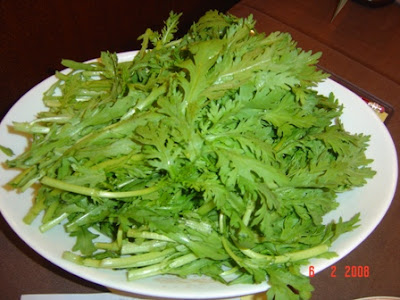
they jumped on the car as soon as we got in
On my way back home after the meeting, I spontaneously popped an idea that I'd stop by the market and pick up some fresh ingredients to make Vietnamese ricepaper wraps with pork belly and shrimp. This is one of hubbie's favorites, well anything with pork belly is his favorite. I usually try to limit him from pork fats and pork/beef organs (I'm a nag sometimes to get him to listen), but once in a while I gotta treat the guy nicely because after all he takes care of my oil changes and keeps me current with my DMV registration. So here it is, his reward, pork belly.
 This Vietnamese course looks sophisticated but it actually is very easy to make. Provided you've got all the ingredients ready, it takes only 30min or so to prepare. Here's the ingredient list.
This Vietnamese course looks sophisticated but it actually is very easy to make. Provided you've got all the ingredients ready, it takes only 30min or so to prepare. Here's the ingredient list.Note: there's no recipe because amounts depend on how you like to make your wraps, some may like more rice noodles, some like more herbs and lettuce, etc.
Ingredients:
+ 1/2 bags of dried rice noodles (or whatever amount you want)
+ 1 package of ricepaper
+ 1-2 lbs pork belly, washed and cut into big pieces about 2-inch wide for faster cooking (see picture)
+ 20-30 shrimps, peels and deveined
+ 1/2 red-leave lettuce
+ 1 cucumber, peeled, and cut into thin slices
+ 1 small bunch of Vietnamese mixed herbs, you can use whichever kinds you like and however much you like. Ideas are: mint (rau hung lui), spicy mint (rau hung cay), Vietnamese coriander (rau ram), Korean perilla leaves (rau tia to), etc.
+ Dipping sauce: Vietnamese Mam Nem. My Mom made it for me and gave me a jar when I came visit her last weekend, I never have to make my own dipping sauce because hers are the best :-) But for those of you who'd like to know how to make it, WanderingChopsticks posts her recipe for it here.
Preparations:
+ In 1 pot, boil the rice noodle, per instruction. Typically, boil for 3-6 minutes, check the texture of the cooked noodles, then drain with cold water.
+ In another pot, boil pork belly until cooked, you can use a chopstick or knife to poke through the meat to check how cooked it is, there should be no sign of blood or pink from the poke. Iit took me 1/2 hour, but I let it boil while doing other things like washing the vegetables, etc.









 + Add white wine
+ Add white wine

































